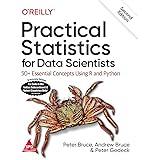Calculate and Interpret Cohen’s d in SPSS
Calculate and Interpret Cohen’s d in SPSS, Cohen’s d is a crucial statistic for understanding the effect size between two groups.
It quantifies the standardized difference between the means of two groups, providing valuable context beyond just p-values.
Calculate and Interpret Cohen’s d in SPSS
This guide explains how to calculate and interpret Cohen’s d in SPSS, covering everything from the basics to practical examples and considerations for your research.
We will be focusing on calculating effect size in SPSS.
Why Cohen’s d Matters: Understanding Effect Size
Cohen’s d = (x1 – x2) / √(s12 + s22) / 2
- x1 , x2: mean of sample 1 and sample 2, respectively
- s12, s22: variance of sample 1 and sample 2, respectively
While p-values tell us if a difference is statistically significant, they don’t reveal the magnitude of that difference.
A statistically significant result might be practically meaningless if the effect size is small. Cohen’s d provides a standardized measure of the effect size, allowing you to:
- Assess the practical significance of your findings.
- Compare effect sizes across different studies and research areas.
- Determine the strength of a relationship between variables.
- Plan sample sizes for future research (power analysis).
Interpreting Cohen’s d (Effect Size Guidelines)
Cohen provided guidelines for interpreting the magnitude of d:
- Small effect: d = 0.2
- Medium effect: d = 0.5
- Large effect: d = 0.8
These are general guidelines; the interpretation can also depend on the specific field of study.
It is important to consider the context of the research when determining what a small, medium, or large effect size is.
Calculating Cohen’s d in SPSS: Step-by-Step Instructions
There are several ways to calculate Cohen’s d in SPSS. We’ll cover the most common scenarios:
1. Independent Samples t-test (Comparing Two Independent Groups)
This is the most common use case.
- Step 1: Open your data in SPSS. Ensure your data is structured correctly (e.g., one column for the grouping variable and another for the dependent variable).
- Step 2: Run the Independent Samples t-test.
- Go to:
Analyze->Compare Means->Independent-Samples T Test... - Select your test variable (the dependent variable).
- Select your grouping variable (the independent variable) and click “Define Groups…”. Enter the group codes.
- Click “OK”.
- Go to:
- Step 3: Find Cohen’s d in the output.
- SPSS doesn’t directly output Cohen’s d for the independent samples t-test by default, but it provides the necessary information. You will need to calculate it yourself, or request it directly through syntax.
- Method 1: Manual Calculation:
- Find the t-statistic and degrees of freedom (df) from the “T-Test” table in the output.
- Calculate d using the formula.
- Method 2: Syntax (Recommended for convenience): Insert this syntax:Copy
- T-TEST GROUPS=your_grouping_variable(group1 group2)
- /MISSING=ANALYSIS
- /VARIABLES=your_test_variable
- /CRITERIA=CI(0.95).
- compute cohens_d = tscore / SQRT(df).
- EXECUTE.
- Replace
your_grouping_variable,group1,group2, andyour_test_variablewith your actual variable names and group values. - The syntax directly calculates
cohens_d. You’ll find the df in the t-test output. Thetscoreis the t-statistic, and will be the test statistic reported in the t-test output. - Run the syntax by highlighting it and pressing the “Run” button.
- Step 4: Interpret the result. Based on the d value, categorize the effect size (small, medium, large) using the guidelines above, and consider the context of your study.
2. Paired Samples t-test (Comparing Two Related Groups)
- Step 1: Open your data in SPSS, making sure your data is structured correctly.
- Step 2: Run the Paired-Samples t-test.
- Go to:
Analyze->Compare Means->Paired-Samples T Test... - Select the two variables you want to compare (e.g., pre-test and post-test scores).
- Click “OK”.
- Go to:
- Step 3: Calculate Cohen’s d. Similar to the independent samples t-test, SPSS doesn’t directly provide
- Use the same syntax as the independent samples t-test syntax, but replace the t-test command with the paired samples t-test command and change the grouping variables.
- Step 4: Interpret the result.
3. One-Way ANOVA (Comparing More Than Two Groups)
- SPSS can compute effect sizes for ANOVA, though the effect size isn’t Cohen’s d (which is for two groups). The most common effect size for ANOVA is eta-squared (η2\eta^2η2) or partial eta-squared (ηp2\eta_p^2ηp2).
- To obtain ηp2\eta_p^2ηp2:
- Go to:
Analyze->Compare Means->One-Way ANOVA... - Select your dependent variable and your factor (the grouping variable).
- Click “Options…”. Check the box for “Descriptive” and “Homogeneity of variance test”.
- Click “OK”.
- Go to:
- The ANOVA table will give you F and degrees of freedom. From the output, find the F-statistic and the degrees of freedom for the effect and error terms. The value for ηp2\eta_p^2ηp2 will be provided directly.
- Interpret eta-squared. General guidelines for interpreting eta-squared:
- Small effect: = 0.01
- Medium effect: = 0.06
- Large effect: = 0.14
- To obtain ηp2\eta_p^2ηp2:
Important Considerations and Best Practices
- Normality: While Cohen’s d is generally robust, the underlying t-tests assume normally distributed data. Check for normality (e.g., with histograms, Q-Q plots, or Shapiro-Wilk tests). If data is non-normal, consider transformations or non-parametric alternatives.
- Homogeneity of Variance: For independent samples t-tests and ANOVA, assume that the variances of the groups are roughly equal. SPSS provides Levene’s test for this. If homogeneity of variance is violated, consider using a t-test with the Welch correction, or a non-parametric test (Mann-Whitney U test) for the independent samples case.
- Reporting: Always report Cohen’s d (or eta-squared), along with the means, standard deviations, sample sizes, t-statistic (or F-statistic), degrees of freedom, and p-value.
- Context Matters: Always interpret effect sizes in the context of your specific research area. What’s considered a “large” effect in one field might be “small” in another.
- Confidence Intervals: Consider reporting confidence intervals around Cohen’s d to show the range of plausible values.
Conclusion: The Value of Effect Size
Calculating and interpreting Cohen’s d in SPSS is essential for a complete understanding of your research findings.
By moving beyond p-values and focusing on effect sizes, you can assess the practical significance of your results, compare findings across studies, and contribute to a more robust understanding of your research area.
This guide provides you with the knowledge and steps necessary to use Cohen’s d effectively in your SPSS analyses.
Remember to always interpret the result carefully, considering the context of your study.




